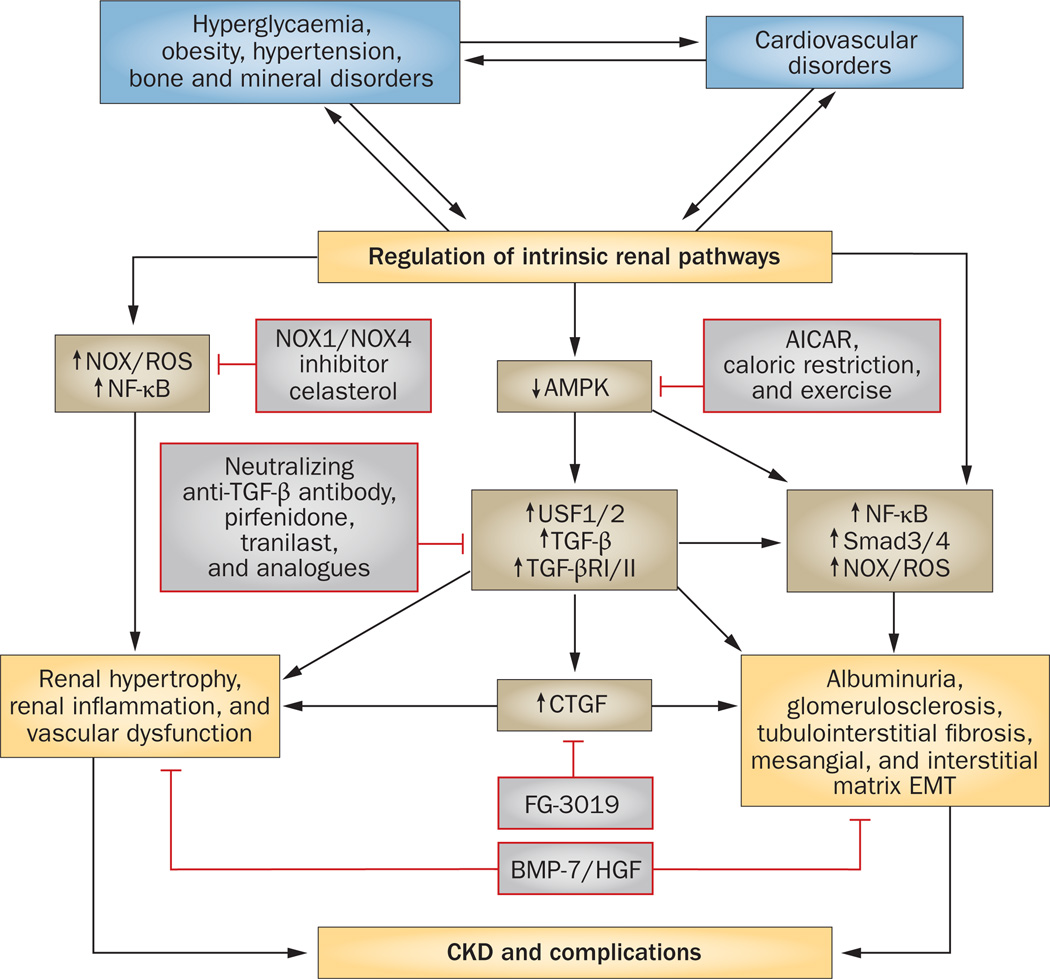Figure 1.
Specific targets and potential therapeutic strategies to inhibit or slow the progression of CKD. There is a complex feed-forward relationship between the initiating factors (hyperglycaemia, obesity, hypertension, bone and mineral disorders) and cardiovascular disorders that stimulate and regulate a variety of major pathways leading to CKD and its complications. Inhibiting intrinsic renal pathways linked to inflammation (NADPH oxidase) and fibrosis (Smads, TGF-β, and CTGF) might prove beneficial. A possible central pathway would be the activation of AMPK that can reduce both inflammatory and profibrotic pathways. Abbreviations: AICAR, AMP analogue; AMPK, 5’-AMP-activated protein kinase; BMP-7, bone morphogenetic protein 7; CKD, chronic kidney disease; CTGF, connective tissue growth factor; EMT, epithelial–mesenchymal transition; HGF, hepatocyte growth factor; NF, nuclear factor; NOX, NADPH oxidase; R, receptor; ROS, reactive oxygen species; Smad, mothers against decapentaplegic homologue; TGF-β, transforming growth factor β; USF, upstream stimulatory factor.

